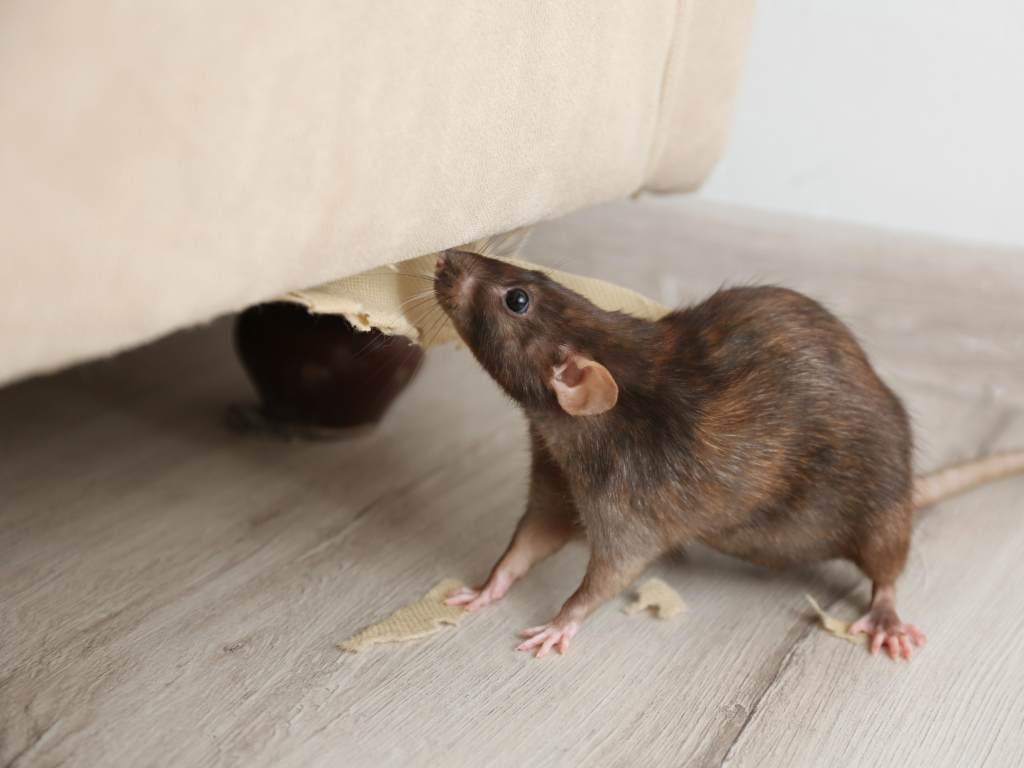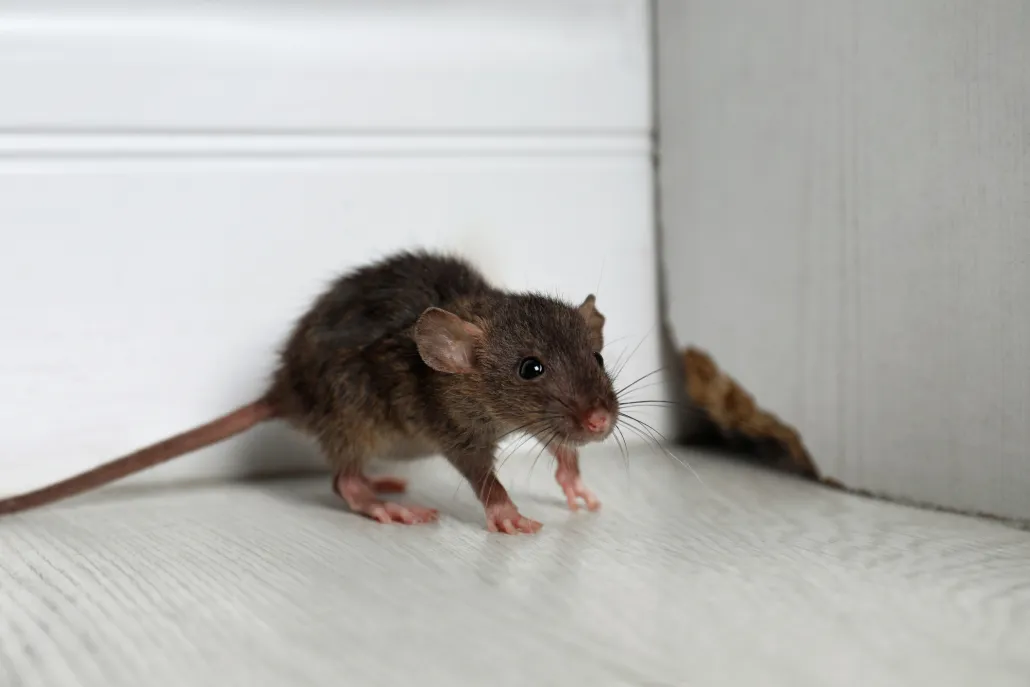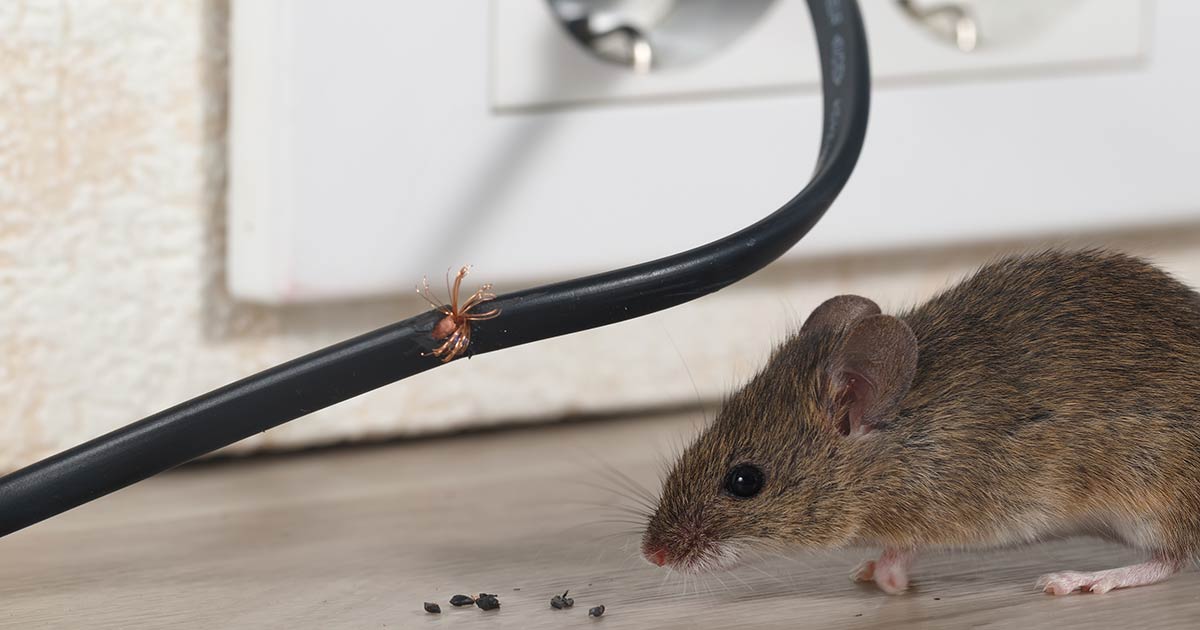Rodent Treatments in Florida
Exterminator Services for Coral Springs, Margate, and Coconut Creek
Florida’s subtropical climate, lauded for its mild winters and year-round warmth, offers a welcoming environment not only to residents but also to various pests—chief among them, rodents. Whether mice scuttling inside walls or rats burrowing in yard perimeters, these creatures thrive where food, water, and hidden corners are plentiful. In Coral Springs, as well as nearby communities like Margate and Coconut Creek, even a small rodent infiltration can escalate quickly if overlooked. This service page highlights how rodents flourish in Florida, how to recognize the warning signs, and why engaging a professional rodent exterminator for rodent treatments stands as the most dependable way to reclaim a clean, pest-free property. By acting swiftly when you suspect droppings, gnaw marks, or nighttime rustling, you protect your investment, occupant health, and daily serenity from unseen rodents chewing behind walls or rummaging in pantries.
Why Rodents Thrive in Florida

- Mild, Short Winters
In cooler states, sub-zero temperatures naturally cull rodent populations or halt breeding cycles. Florida’s winter seldom hits freezing for extended spells, allowing mice and rats to remain fully active year-round. Indoors, stable heating or air conditioning further protects them from any brief chills, enabling them to forage for food and breed with fewer seasonal breaks. - Abundant Moisture and Rainfall
Rodents seek reliable water sources; Florida’s humid air, frequent rain, and condensation near air-conditioning units supply plenty. When heavy downpours flood yard burrows or saturate soil, rodents often slip indoors via foundation gaps or door sweeps. Once inside, constant moisture—from minor leaks under sinks or drip lines—helps them establish permanent nesting sites. - Minimal Seasonal Dormancy
While rodents in northern climates experience partial dormancy or reduced reproduction in harsh winters, southwestern Florida’s climate imposes no such forced slowdown. A small group of mice or rats left unchecked can rapidly multiply, occupying multiple floors or adjacent units, especially if occupant or property manager efforts remain partial. - Plentiful Food Opportunities
Mice and rats devour nearly any organic matter—from crumbs on kitchen floors to unsealed cereals or leftover pet food. Areas like Coral Springs or Margate, where occupant lifestyles may sometimes lead to open trash bins or neglected leftover scraps, become magnets for rodents seeking quick meals. With mild winters, occupant housekeeping seldom benefits from a seasonal respite that might kill off pests. - Frequent Movement and Occupant Turnover
Rodents hitch rides in shipments, moving boxes, or secondhand furnishings. The region’s occupant transitions—short-term rentals, commercial deliveries—can unintentionally introduce a few rodents. Once established behind walls or large appliances, they expand quietly unless occupant vigilance or professional solutions detect and remove them.
Indications of a Rodent Infestation
- Droppings
Rodent droppings differ by species: mice leave small, rice-like pellets, whereas rats produce larger, capsule-shaped droppings. Fresh droppings are dark and moist. Finding them near food storage—like cabinets, pantries, or bins—confirms active rodent movement, strongly suggesting foraging routes. - Gnaw Marks and Shredded Materials
Rodent teeth grow continuously, prompting mice and rats to chew on wood edges, plastic containers, or cardboard boxes. If occupant notices holes in cereal bags or nibble marks on furniture legs, rodents are scavenging for sustenance or building nests with shredded paper or cloth. - Nocturnal Scratching or Squeaks
Mice and rats primarily roam after dark, rummaging for crumbs or water. Occupant hearing faint squeaks, scuttling, or gnawing from walls, ceilings, or attics at night strongly suggests rodents. Locating the source might reveal nest areas like behind large appliances or in seldom-used storage rooms. - Nests of Shredded Material
Rodents gather soft items—paper, insulation, or fabric—to construct cozy nests concealed in corners or under floors. Seeing droppings or seeds around these piles confirms repeated occupation, indicating a breeding site. Quick occupant or professional removal stalls population growth. - Unusual Pet Focus
Cats or dogs might paw or stare intently at baseboards, behind stoves, or near seemingly empty corners if they detect rodent scents. Investigating for droppings or tiny holes can confirm if mice or rats pass through those zones.
Consequences of Leaving Rodents Untended
- Health Hazards
Rodents contaminate surfaces and stored goods with droppings, urine, or fur, potentially spreading bacteria or viruses. Mice or rats may also carry fleas or ticks that jump onto occupants or pets. Eliminating rodents early preserves occupant well-being and keeps living areas sanitary. - Structural or Wiring Damage
Mice and rats sometimes gnaw on wooden beams, insulation, or electrical wires. Over time, these hidden chew marks degrade structural components or pose fire risks if wires become exposed. Swift occupant or professional steps can prevent costly repairs. - Rapid Reproduction
A single pair of rodents can produce multiple litters within a year, quickly overrunning an unmonitored attic or basement. Florida’s mild climate and occupant routines provide near-continuous breeding opportunities, making occupant vigilance or professional measures essential to avoid larger outbreaks. - Daily Distress
Finding droppings in kitchen drawers or hearing squeaks behind walls unsettles occupant comfort, overshadowing daily tasks with worry about contamination or potential sightings. Effective eradication restores occupant peace, letting families or employees focus on daily life instead of scanning for rodents.

Why a Professional Exterminator Is Best
- Comprehensive Property Inspection
A rodent exterminator inspects kitchens, basements, attics, or yard edges, pinpointing droppings, nest debris, or gnaw marks that confirm rodent species and nesting zones. Accurate identification (mouse vs. rat) shapes the choice of trap sizes, baits, or potential perimeter treatments. - Strategic Trapping and Baiting
DIY traps can scatter rodents deeper into walls if misapplied. Professionals place snap traps, multi-catch devices, or tamper-resistant bait stations methodically where rodents travel—like baseboards or behind appliances—ensuring lethal contact. This approach covers entire colonies, not just a few visible stragglers. - Exclusion and Sanitation
Eliminating rodents is temporary if occupant housekeeping or structural fixes remain undone. Exterminators advise sealing small holes around foundations, installing door sweeps, or caulking gaps near plumbing lines. Occupant-led cleanliness—storing cereals in sealed containers, emptying trash daily—denies rodents the essentials for survival. - Reduced Chemical Exposure
Indiscriminate over-the-counter rodenticides risk occupant or pet exposure without guaranteeing nest eradication. Professionals tailor solutions to occupant conditions, focusing baits or traps where rodents feed and hide, limiting occupant contact while maximizing rodent contact with lethal products. - Follow-Up Verification
Because rodents reproduce quickly, occupant or professional re-checks help confirm total removal. If occupant sightings persist, re-positioned traps or stronger baits finalize eradication. This thoroughness spares occupant tension over potential hidden pockets of breeding activity.
Methods for Rodent Treatments
- Inspection and Mapping
The exterminator checks every possible rodent pathway—behind stoves, under sinks, near utility lines—for droppings or nests. Observing droppings near certain rooms clarifies if rodents concentrate in kitchens vs. attics. Understanding which species is present helps match trap or bait station sizes. - Trap Deployment
Snap traps placed flush against walls catch mice or rats traveling their typical runways. Bait choice—like peanut butter—entices them, while occupant or professional checks regularly ensure quick removal of caught rodents. Multi-catch devices can capture multiple mice if occupant or caretaker empties them promptly. - Bait Stations
For extensive populations or hidden colonies, tamper-resistant bait stations with rodenticides can discreetly kill rodents behind walls. Because these poisons act slowly, rodents typically return to nests, distributing toxins among nest mates. Exterminators place these carefully to avoid occupant or pet interference. - Exclusion and Sealing
Occupants must block any holes or cracks to prevent re-entry. Using steel wool or metal flashing around pipes, filling foundation gaps with caulk, or installing new door sweeps ensures no dime-sized opening remains accessible to mice. Rat or mouse infiltration remains nearly impossible if occupant repairs remain thorough. - Environmental Adjustments
Removing clutter from storage areas or discarding cardboard piles eliminates rodent nesting sites. Fixing leaky faucets or dripping air conditioners denies them water sources. Storing leftover foods or cereals in sealed plastic or metal containers also cuts off easy meals, forcing rodents to approach traps or starve.

Service Areas: Coral Springs, Margate, and Coconut Creek
Coral Springs: Celebrated for its family-friendly neighborhoods and recreational spaces, Coral Springs experiences occupant transitions that can inadvertently introduce rodents in moving boxes or secondhand furniture. Quick occupant checks—like noticing droppings under sinks—plus synergy with professional solutions hamper multi-floor rodent spreads.
Margate: A suburban zone mixing older homes and new developments, where occupant lifestyles or minimal structural upkeep might let mice slip in. Thorough occupant housekeeping—storing food in sealed bins, removing leftover scraps—and advanced trap/bait usage ensure rodents lose their strongholds quickly.
Coconut Creek: Known for tree-filled communities and wildlife preserves, this area sees increased rodent migrations if occupant yard edges remain cluttered or moist. Occupant synergy—like trimming shrubs near walls—and prompt professional help contain rodents before they nest in attics or behind large kitchen appliances.
Why Our Rodent Solutions Excel
- Florida-Focused Methods
Because southwestern Florida seldom experiences freezing temperatures that slow rodent breeding, occupant synergy—like discarding leftover food—and targeted baits or traps ensure rodents cannot settle. We adapt each approach to occupant schedules, property layouts, and confirmed rodent hideouts. - Precision and Minimal Environmental Impact
We direct traps or bait stations where rodents actually travel—like corners, near stoves—limiting occupant exposure to toxins or mechanical devices. Occupants typically continue daily activities with minimal disruption while rodents encounter lethal outcomes in high-traffic zones. - Exclusion Emphasis
Removing active mice or rats solves the immediate threat, but occupant-driven structural sealing cements long-term rodent-free status. By highlighting door sweeps, caulking holes, or applying steel wool to cracks, owners close infiltration paths, keeping new rodents at bay. - Follow-Up Confirmation
Because rodents reproduce rapidly, occupant checks or re-visit scheduling ensures no new litters survive unnoticed. If occupant sightings linger, stronger or repositioned measures finalize thorough removal, guaranteeing occupant calm.
Next Steps
Spotting small droppings in pantries, hearing squeaking at night, or seeing chewed cereal boxes? Contact us to learn more or schedule your service. Our rodent treatments in Coral Springs, Margate, and Coconut Creek locate rodent harborage sites, deploy strategic traps or baits, and seal access points—removing hidden mice or rats swiftly, protecting occupant routines. Partnering with a professional rodent exterminator secures a safe, pest-free environment, free of gnawing behind walls or droppings in cupboards.
By tackling rodent presence early, occupant tension and structural damage remain minimal. Combining occupant housekeeping—like discarding clutter, storing foods in sealed containers, promptly fixing leaks—with advanced trap or bait station usage stops rodent expansions cold. Freed from furtive scurrying at night, property owners in southwestern Florida can enjoy mild weather living, confident rodents no longer overshadow daily life.
Maintaining a Rodent-Free Setting
- Seal Food and Dispose of Waste: Store cereals, snacks, or pet food in rigid containers. Empty kitchen trash nightly, using lidded bins indoors. Mice or rats scouring the area find no scraps to support breeding.
- Repair Water Leaks: Fix dripping faucets, AC condensation lines, or roof leaks quickly. Rodents rely on water sources, so occupant dryness steps hamper nest building.
- Reduce Clutter: Cardboard piles or stacked papers create hidden nesting spots. Keeping rooms, garages, or attics organized in sealed plastic bins leaves fewer corners for rodents to hide.
- Seal Gaps: Mice fit through dime-sized holes, rats through quarter-sized ones. Checking doors, windows, or plumbing inlets with caulk, steel wool, or metal flashing ensures no easy infiltration routes remain.
- Monthly Inspections: Occupant or caretaker glance behind stoves, refrigerators, or attics for fresh droppings or gnaw marks. Early occupant detection halts expansions before occupant stress escalates.
Through occupant cooperation and professional rodent control, southwestern Florida homes or businesses deter mice or rats from building hidden colonies. Even though Florida’s mild winters invite nearly continuous rodent breeding, occupant synergy—like dryness management and sealing cracks—and lethal trap or bait solutions keep them from regaining a foothold. Residents in Coral Springs, Margate, or Coconut Creek thus enjoy the subtropical climate and local amenities undisturbed by rodent sightings or potential contamination hazards.
